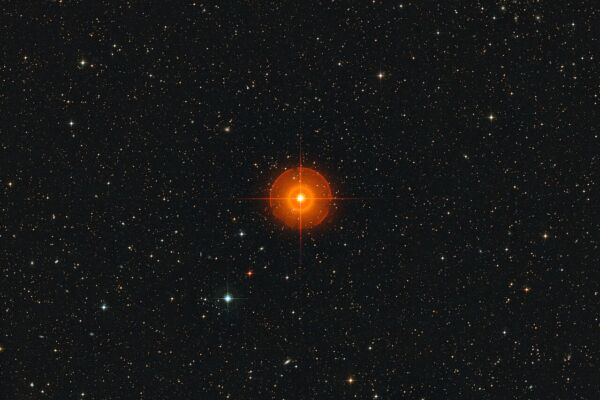Astronomers have captured detailed images of massive bubbles of convection on the surface of a star for the first time. These scorching bubbles are swirling on the surface of the star, with each bubble being 75 times the size of the Sun.
The European Southern Observatory (ESO) announced in a press release on September 11th that the star, located in the constellation of Dorado, is a red giant known as R Doradus, situated approximately 180 light-years away from Earth.
The astronomers at the observatory used the Atacama Large Millimeter/submillimeter Array (ALMA) in Chile last year to capture images of R Doradus, showing high-resolution visuals of massive and hot bubbles forming on the star’s surface, each reaching 75 times the size of the Sun and sinking into the star’s interior at a faster rate than expected.
Professor Wouter Vlemmings from the Chalmers University of Technology in Sweden, who led the study, stated, “This is the first time we have been able to capture the real surface bubbling of a star in this way.”
He added, “We never expected the data quality to be this high, allowing us to observe so many details of the star’s surface convection.”
Stars produce energy through nuclear fusion at their core. This energy is transmitted to the star’s surface through massive, hot bubbles, where it then cools and sinks back down.
This convective motion helps spread heavy elements formed in the core (such as carbon and nitrogen) throughout the star, believed to generate stellar winds that disperse these elements across the universe, eventually contributing to the formation of new stars and planets.
Prior to this study, detailed tracking of convection movements on stars had not been done by astronomers, other than the Sun. Using ALMA, researchers were able to obtain high-resolution images of R Doradus’s surface within a month.
With a diameter approximately 350 times that of the Sun, this star serves as an ideal observational target due to its massive size and relatively close proximity to Earth.
Furthermore, the mass of R Doradus is similar to that of the Sun, suggesting that it is likely to evolve into a red giant resembling the Sun in about 5 billion years.
Vlemmings mentioned that the observations of R Doradus provide insights into understanding the behaviors of stars like the Sun as they grow massive and bubble-filled, similar to R Doradus.
The findings of this study were published on September 11th in the journal “Nature.”

